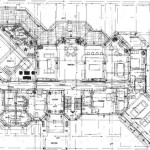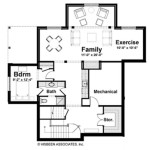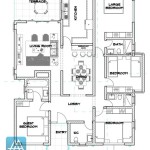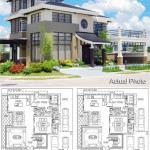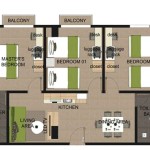How To Get Construction Plans For My House
Obtaining construction plans is a crucial step in any home building or renovation project. These plans, often referred to as blueprints, serve as a detailed visual representation of the intended structure, outlining its dimensions, materials, and construction methods. They are essential for obtaining permits, securing financing, and guiding the construction process. Understanding the different avenues for acquiring these plans and the information they contain is paramount for a successful project.
The complexity of construction plans can vary considerably depending on the scope of the project. A simple renovation, such as adding a deck, might require a relatively straightforward plan. Conversely, building a new house necessitates a comprehensive set of drawings, encompassing architectural, structural, electrical, plumbing, and mechanical systems. The level of detail required will also influence the cost and time involved in securing the plans.
Understanding the Different Types of Construction Plans
A complete set of construction plans typically comprises several distinct categories, each focusing on a specific aspect of the project. Familiarizing oneself with these different types of plans will aid in understanding the entire building process and ensure all necessary details are accounted for.
Architectural Plans: These plans provide the overall aesthetic and functional design of the building. They typically include floor plans, elevations, sections, and details. Floor plans illustrate the layout of each level, indicating the dimensions of rooms, the placement of doors and windows, and the location of fixtures and appliances. Elevations show the exterior appearance of the building from different sides, providing a visual representation of the facade. Sections are vertical cuts through the building, revealing the internal structure and relationships between different elements. Details are enlarged drawings of specific features, such as window and door details, or complex connections, providing precise information for construction.
Structural Plans: These plans outline the load-bearing elements of the building, ensuring its stability and safety. They typically include foundation plans, framing plans, and details of structural connections. Foundation plans show the dimensions and layout of the foundation, including the footing, walls, and slabs. Framing plans illustrate the arrangement of structural members, such as beams, columns, and rafters, specifying their size, spacing, and material. Structural details provide precise information on how these members are connected to each other and to the foundation, ensuring the structural integrity of the building.
Electrical Plans: These plans depict the electrical system of the building, including the location of outlets, switches, lighting fixtures, and electrical panels. They also indicate the type and size of wiring required for different circuits. Proper electrical plans are crucial for safety and compliance with electrical codes. They ensure that the electrical system is adequately sized to handle the anticipated load and that all wiring is installed correctly to prevent hazards such as electrical fires.
Plumbing Plans: These plans illustrate the plumbing system of the building, including the location of pipes, fixtures, and drains. They also specify the type and size of pipes required for different applications. Accurate plumbing plans are essential for ensuring proper water supply, drainage, and venting. They help prevent problems such as leaks, clogs, and backflow, which can lead to water damage and health hazards.
Mechanical Plans: These plans depict the heating, ventilation, and air conditioning (HVAC) system of the building, including the location of equipment, ductwork, and vents. They also specify the size and capacity of the equipment required to maintain comfortable indoor temperatures. Well-designed mechanical plans are crucial for energy efficiency and indoor air quality. They ensure that the HVAC system is properly sized to meet the building's heating and cooling needs and that the air is circulated effectively to maintain a healthy and comfortable environment.
Where to Obtain Construction Plans
Several avenues exist for obtaining construction plans, each with its own advantages and disadvantages. The best option will depend on the complexity of the project, the budget, and the level of involvement the homeowner desires to have in the design process.
Hiring an Architect: Hiring a licensed architect is often the most comprehensive approach, especially for new construction or significant renovations. Architects possess the expertise to design a building that meets the homeowner's needs and aesthetic preferences while also complying with building codes and regulations. The architect will create a complete set of construction plans, managing the entire design process from conceptualization to final drawings. This option offers the greatest level of customization and ensures that the plans are tailored to the specific site and project requirements. However, it also represents the most expensive option.
Working with a Building Designer: A building designer can provide design services similar to an architect, but they may not have the same level of formal education or licensing. Building designers are often more experienced in specific types of projects, such as residential renovations or additions. They can create detailed construction plans and assist with permit applications. This option can be more cost-effective than hiring an architect, but it is important to carefully vet the designer's qualifications and experience. Ensure the building designer is familiar with local building codes and regulations.
Purchasing Pre-Drawn Plans: Pre-drawn plans are generic house plans that can be purchased online or from plan providers. This option is the most cost-effective, but it offers the least amount of customization. Pre-drawn plans may need to be modified to meet local building codes and site conditions. It is essential to ensure that the plans meet the requirements of the local building department before purchasing them. Additionally, alterations to pre-drawn plans may require the assistance of a qualified architect or building designer.
Using Design-Build Firms: Design-build firms offer a combined design and construction service. These firms have in-house architects or designers who work in collaboration with the construction team. This approach can streamline the process and ensure that the design is constructible and cost-effective. It also places responsibility for both the design and construction on a single entity, which can simplify communication and reduce the risk of errors. However, it is important to carefully evaluate the firm's design capabilities and construction expertise.
Essential Information Included in Construction Plans
The information contained within construction plans must be accurate and comprehensive to ensure a smooth and successful project. Several key elements are essential for clear communication and accurate execution of the design.
Dimensions and Measurements: Precise dimensions and measurements are crucial for accurate construction. The plans should clearly indicate the length, width, and height of all elements, including rooms, walls, doors, and windows. These measurements should be consistent across all drawings to avoid errors during construction. The scale of the drawings should also be clearly indicated to allow for accurate interpretation of the dimensions.
Materials Specifications: The plans should specify the type and grade of all materials to be used in the construction, including lumber, concrete, steel, insulation, and finishes. These specifications ensure that the correct materials are used and that the building meets the required performance standards. The plans should also indicate the manufacturer and model number of any specific products, such as windows, doors, or appliances. Proper material specification ensures structural integrity and aesthetic consistency.
Construction Details: Detailed drawings of specific construction elements, such as wall sections, roof details, and foundation details, are essential for providing clear instructions to the contractor. These details should show the construction methods and connections between different elements. They should also include information on flashing, insulation, and waterproofing to ensure that the building is weathertight and energy-efficient. Clear and detailed information on construction techniques minimizes ambiguity and potential errors during execution.
Building Codes and Regulations: Construction plans must comply with all applicable building codes and regulations. These codes address safety, structural integrity, energy efficiency, and accessibility. The plans should indicate that they have been reviewed and approved by the local building department. Compliance with building codes is essential for obtaining permits and ensuring that the building is safe and habitable. Failure to comply with building codes can result in costly delays and fines. It’s important to verify that all elements represented adhere to local zoning ordinances.
Location of Utilities: The plans should clearly indicate the location of all utilities, including water lines, sewer lines, electrical lines, and gas lines. This information is crucial for avoiding conflicts between the construction and the existing utilities. It also helps ensure that the utilities are properly installed and connected. Proper planning for utility locations facilitates smooth connections and avoids costly re-routing during construction.
Obtaining comprehensive and accurate construction plans is a fundamental prerequisite for any successful building project. By understanding the different types of plans, the various avenues for acquiring them, and the essential information they should contain, homeowners can ensure that their project is well-defined, compliant, and ultimately, a successful realization of their vision.

Design Your Own House Floor Plans Roomsketcher

Where You Can Buy House Plans Live Home 3d

Design Your Own House Floor Plans Roomsketcher

Design Your Own House Floor Plans Roomsketcher

Design Your Own House Floor Plans Roomsketcher

Design Your Own House Floor Plans Roomsketcher

Design Your Own House Floor Plans Roomsketcher

Design Your Own House Floor Plans Roomsketcher

How To Design A House From Sketch Reality

Free House Design Home And Plans
Related Posts



